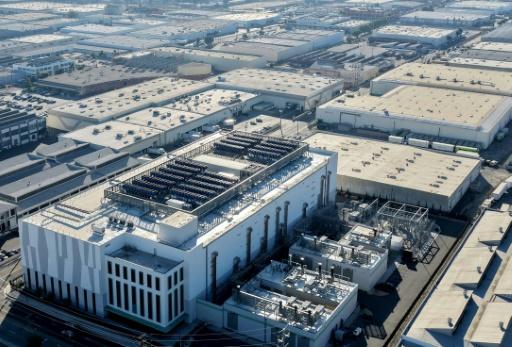
Tech firms are increasingly exploring the idea of constructing data centers in space, harnessing solar energy to satisfy the immense power demands of the competitive artificial intelligence industry. This week, U.S. startup Starcloud launched a refrigerator-sized satellite equipped with an Nvidia graphics processing unit (GPU) into orbit, marking what the AI chip maker described as a “cosmic debut” for mini-data centers.
“The idea is that it will soon make much more sense to build data centers in space than it does to build them on Earth,” stated Starcloud CEO Philip Johnston at a recent tech conference in Riyadh. Advocates highlight that, along with a constant supply of solar energy, cooling data centers is easier in the vacuum of space.
Tech Giants Join the Race
Announcements in this burgeoning field have been rapid. Google recently revealed plans to launch test satellites by early 2027 as part of its Suncatcher project. This development follows tech billionaire Elon Musk’s claim that his SpaceX startup could deploy data centers in orbit next year, leveraging its Starlink satellite program. Starcloud’s satellite was transported into space by a SpaceX rocket on Sunday.
Current projects envision clusters of low Earth orbit satellites positioned to ensure reliable wireless connectivity. These satellites would use lasers to connect space-based computers with terrestrial systems. “From a proof concept, it’s already there,” said University of Arizona engineering professor Krishna Muralidharan, involved in such technological advancements. Muralidharan believes space data centers could become commercially viable in about a decade, although Amazon founder Jeff Bezos suggests it might take up to twice that long.
Technical and Economic Challenges
Despite the potential, significant technical challenges remain, particularly concerning the impact of high radiation levels and extreme temperatures on GPUs, as well as the risk posed by space debris. “Engineering work will be necessary,” noted University of Michigan assistant professor of engineering Christopher Limbach, emphasizing that cost is a more significant barrier than technical feasibility.
The primary allure of space-based data centers is the power supply, with satellites potentially synchronized to the sun’s orbit to ensure constant solar panel illumination. As tech giants continue to expand AI data centers, their electricity needs grow, prompting investments in alternative energy sources like nuclear power plants. Space data centers also sidestep issues related to land acquisition and regulatory compliance, which are common on Earth.
“The real question is whether the idea is economically viable,” said Limbach.
Economic Viability and Future Prospects
One of the main obstacles to deploying servers in space has been the cost of launching them into orbit. However, SpaceX’s reusable mega-rocket, Starship, with its significant payload capacity, promises to reduce launch expenses by at least 30 times. “Historically, high launch costs have been a primary barrier to large-scale space-based systems,” stated Suncatcher project head Travis Beals. He added that project launch pricing data suggests costs may decrease by the mid-2030s, making space-based data centers financially comparable to their terrestrial counterparts.
“If there ever was a time to chart new economic paths in space — or re-invent old ones — it is now,” Limbach remarked.
As the race to develop space-based data centers intensifies, the implications for the tech industry and global energy consumption are profound. While the journey is fraught with challenges, the potential rewards of tapping into the vast resources of space could redefine the future of data management and energy use.






